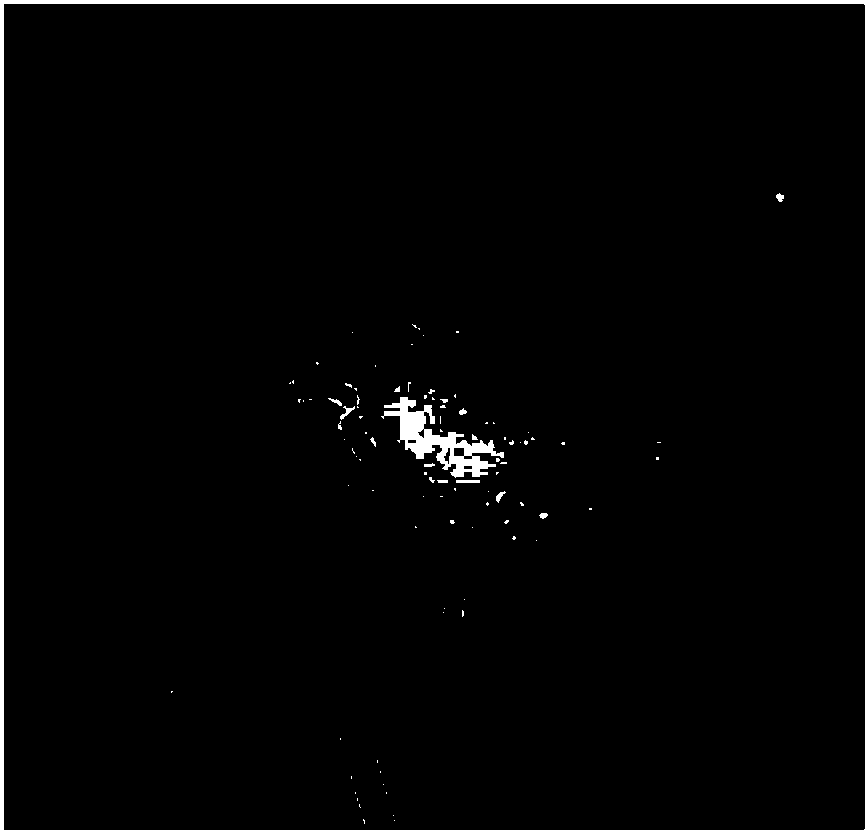Lactobacillus for inhibiting PEDV (Porcine Epidemic Diarrhea Virus) adhesion
A technology of Lactobacillus reuteri and Lactobacillus reuteri, applied in the directions of bacteria, microorganism-based methods, medical preparations containing active ingredients, etc., can solve the problems of difficult prevention and control work and unstable effects.
- Summary
- Abstract
- Description
- Claims
- Application Information
AI Technical Summary
Problems solved by technology
Method used
Image
Examples
Embodiment 1
[0032] Example 1: Isolation and Identification of Lactobacillus of Porcine Origin
[0033] 1. Sample collection
[0034] Animal feces were collected in the animal room of an experimental animal center, healthy piglets around 45 days old. Use a sterile cotton swab to collect fresh feces samples from pigs within 30-60 minutes, put them in sealed bags, put them in an ice box and send them back to the laboratory immediately. Randomly sample 5 samples from each pig house, and collect feces from 4 pig houses. There are 20 samples in total. All piglets were free of recent diarrheal disease, antibiotics or feed containing antibiotics, and feed additives containing probiotics. After taking the samples and sending them to the laboratory, store them at 4°C, and complete the isolation of bacteria within 4 hours.
[0035] 2. Medium
[0036] Lactobacillus selective medium (MRS-vancomycin solid medium): peptone 10g, beef extract 10g, yeast extract 5g, glucose 20g, sodium acetate 5g, diam...
Embodiment 2
[0064] Example 2: Lactobacillus reuteri NAU2015807129 acid resistance, bile salt resistance, adhesion ability test
[0065] 1. Acid resistance test
[0066] The test strain was inoculated in the MRS liquid medium according to the inoculum amount of 5% (v / v), and activated for 2 to 3 generations to ensure the high activity of the strain. The activated bacterial solution was inserted into the liquid medium of pH 1.5, pH 2.0 and pH 2.5 and the unacidified medium (as a control) acidified with hydrochloric acid according to 1% (v / v) inoculum, 37 After treatment at ℃ for 2 hours, the samples were diluted in different gradients, and the total number of colonies was measured by the agar plate pouring method, and the changes in the number of viable bacteria before and after treatment were compared. Each experiment was repeated three times.
[0067] Table 4 The growth of NAU2015807129 cultured in MRS with different pH for 2h (mean ± standard deviation)
[0068] Table 4 Survival analy...
Embodiment 3
[0087] Example 3: Lactobacillus reuteri NAU2015807129 inhibits PEDV adhesion test
[0088] In this experiment, vero cells were used to amplify PEDV, using 100TCID 50 The challenge meter infects IPEC-J2 cells.
[0089] IPEC-J2 cells were cultured on a 96-well plate. After the cells were fused to a monolayer, the medium was discarded, washed once with sterilized PBS, and then the following experiments were performed. The experiments were divided into three treatments as follows:
[0090] (1) Group 1 prevention group. Pre-concentrated at 1×10 8 Add 0.1mL of CFU / mL bacterial solution to the cells for 1.5h, wash off thoroughly, and then add TCID with a titer of 100 times 50 / 0.1mL of PEDV virus 0.1mL treated for 1.5h, after thorough washing, 37℃, 5%CO 2 The cells were cultured in an incubator, with 4 replicates for each sample.
[0091] (2) Group 2 repair group. Pre-titer to 100 times TCID 50 / 0.1mL PEDV virus 0.1mL was added to the cells for 1.5h, washed away thoroughly, an...
PUM
 Login to View More
Login to View More Abstract
Description
Claims
Application Information
 Login to View More
Login to View More - R&D
- Intellectual Property
- Life Sciences
- Materials
- Tech Scout
- Unparalleled Data Quality
- Higher Quality Content
- 60% Fewer Hallucinations
Browse by: Latest US Patents, China's latest patents, Technical Efficacy Thesaurus, Application Domain, Technology Topic, Popular Technical Reports.
© 2025 PatSnap. All rights reserved.Legal|Privacy policy|Modern Slavery Act Transparency Statement|Sitemap|About US| Contact US: help@patsnap.com



